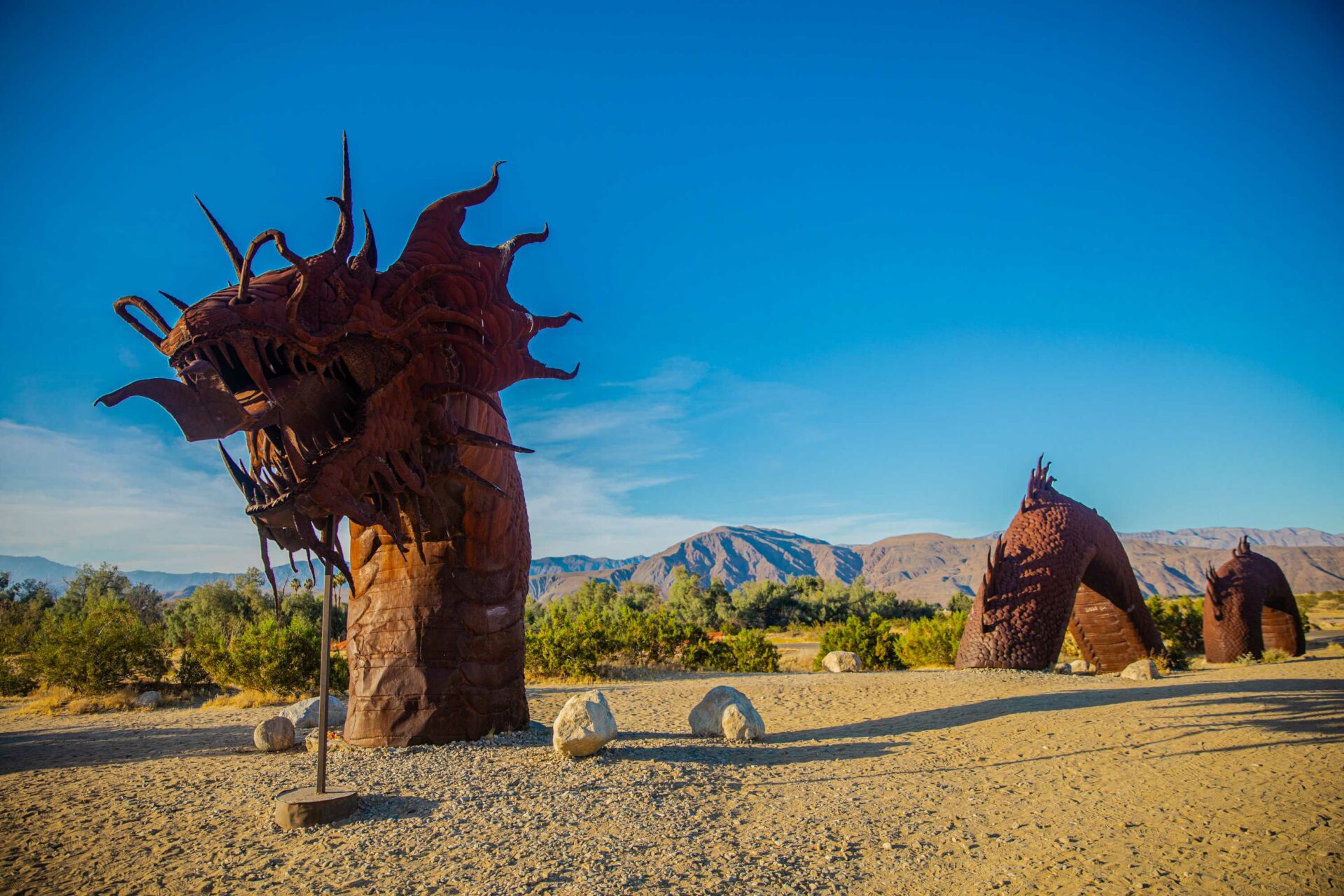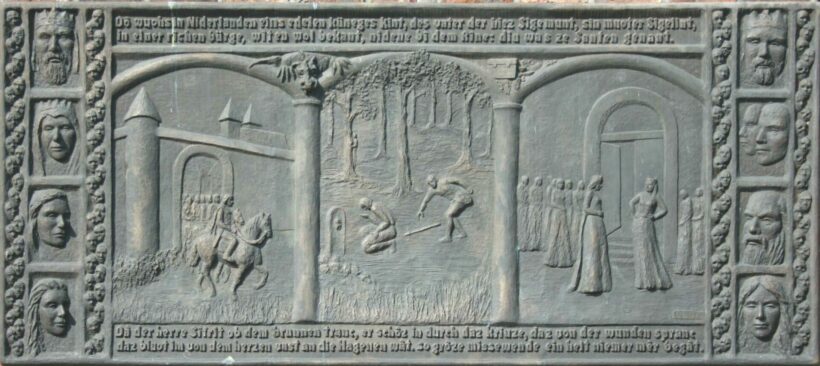Siegfried relief at Xanten in Nordwall, Xanten.
By Javier Belda
In Norse mythology Siegfried (Sigurd in Scandinavia) is the hero who fights the dragon. In the traditional narrative, the dragon is the ultimate representative of the beast, terror, the invincible, the non-human, chaos, evil.
Siegfried carries with him the stigma of the mythical battle against the beast. After slaying the dragon, the hero bathes in its blood and its skin becomes so tough that no weapon can hurt it.
The one who slays the beast is therefore a hero who has been able to overcome human limitations to overcome them in a terrible struggle. This process, however, implies a certain dehumanisation: the hero has to partially become a beast in order to defeat his opponent.
After defeating the beast, however, the hero needs to go through a process of re-humanisation at the risk of being trapped in an anti-social world. For alchemists this process is represented as cooling.
Thus, Tristan (Cornish folklore character) is plunged into a pond after defeating the dragon and CuChulainn (Irish hero) has to be cooled in three types of ice water in succession.
Another element characterising the hero is that the victory over the dragon allows him to take the treasure that the dragon was guarding. The beast and gold are associated in alchemical symbolism, where the dragon represents the fire that must be mastered. Beyond a negative connotation, in many cultures the dragon is a symbol of ancestral power.
Thus, in the epic poetry of the Song of the Nibelungs (among other texts) gold does not represent a material value, but something essential, a symbol of purity and infringable power.
This mythology is intricately woven into the music of Mussorgsky and Wagner, into Gogol’s tales and dreams. The mythical dance reaches both to the magician and to the stars that travel the Milky Way with their dynamic spirals.
Things of other times or rather the opposite? Without a doubt we are betting on the latter.
If we had to summarise the current human problem in a few words, we would say that everything revolves around violence. This is the great existential conflict of our time.
The hominids known as australopithecus, who lived in Africa 4 million years ago, are considered to be the first ancestors of the human species. Humans have been evolving ever since. But sometimes we don’t see evolution anywhere. How is this level of violence possible?
Humans, as they organise with others to create civilisations, must master fire. Depending on the temperature reached in their ovens, that is how fast a civilisation will grow. This is not a finished process, which is why great efforts are invested in nuclear fusion.
Some think that the evolutionary process is now about global intercultural survival. Therefore the phase of competitiveness between civilisations has come to an end. What must be done now is to cooperate for global survival.
As much as many may think this, the question is: what to do when the world is dominated by anti-humanism?
You are thinking about the problem without understanding that you yourself are part of the problem. The dragon we face is that of self-knowledge and self-improvement.
 pexels
pexels
Internal violence and geopolitics
Instead of lamenting – with more or less sincerity – about what we did not do, about the values we left behind, or about what we polluted… let us try to understand what is going on with regard to the internal violence we experience.
Each of us has our own psychism. Despite all the cultural recordings that have enveloped our lives, there is a (supposedly small) possibility of choice. Especially when we experience violence in our environment we have two possibilities before us: violence or non-violence as an attitude.
Many people underestimate the almost magical power of non-violence in resolving the many paradoxes in which we may find ourselves.
Faced with a given conflict, it requires first of all inner serenity, an understanding of what is going on and trying to look with a compassionate look at those who seemingly wish to deny your existence (or your judgement).
Why so much weakness, why this escape from what is essential?
Nonviolence has guidelines, more or less basic depending on the level of aggression that each person faces. In principle, in the face of a certain danger, it will be appropriate to turn away, and nothing more, but many situations have much more room for manoeuvre than we suppose a priori.
Nonviolence is a path. It is the hero’s initiatory immersion that takes him further than he supposed in his fight against the dragon, which in this analogy represents the mechanical tendency and the letting go without intentionality. Instead, in the evolutionary journey appear secrets that are revealed and unexpected sources of energy that show him the right route, in the face of lurking detours.
This attitude, in other words, is nothing more than placing oneself at the disposal of the spirit. The evolutionary forces of the universe participate in all that exists. Therefore, when the time is right, they express themselves and a kind of complementation takes place between one’s own destiny and the destiny of the existing.
What else is life about but this?
From a nonviolent point of view, it can be understood that the only problem of humanity today is the problem of violence.
A “normal” person going about his life says: it’s unbelievable what is going on, the world is run by madmen and corrupt people. Presumably he is thinking that he wouldn’t do the same if he wielded any kind of power. But then we see that when he gets a sliver of power he starts to admit certain things, to shrug his shoulders at others and finally to become a staunch defender of the system (of installed violence).
Another prejudice that someone “insignificant” has is that he can’t do anything. So “let others do for me”, after all, what can he do! Then he says: “look, I wasn’t born to be a martyr”.
Adaptation to the system has several levels, ranging from maladaptation to decreasing total adaptation.
When the individual, convinced of his insignificance, shamelessly directs himself to decreasing adaptation, he looks outside for what he cannot find inside; he wants to do and say things that promote him, that give him external recognition.
Then the system shows him the things it has prepared for him. It shows him what words to use and how he must transform the gender of those words in order to be a good citizen; it explains to him that the destruction of sacred ecosystems is not the problem, but the air. It also tells him when to feel hot or cold, and when to be prepared for or panic about the flu. Finally, it shows him wars to accept, for his children’s livelihoods depend on them. “At the end of the day, the powerful can’t be that bad, let’s not be conspiratorial,” she says.
Most personal and social conflicts stem from ignorance about self-knowledge. This ignorance is replaced by a belief system and a mental form associated with that substratum.
For example, it is believed that receiving is better than giving. Everywhere we look we see people obsessed with that. But one of the great problems of humanity is that people don’t know who to give to.
Every person spends a few decades doing things in this time and space. Minimally he accumulates some property and some resources. It’s what he has dedicated his life to. So “does that have any meaning?”, she says to herself. So the meaning of his life, ultimately, is his heirs.
Sometimes a family can hoard great resources, then the problem is no longer one person, but the dimension of these assets affects a country or an entire culture.
The existential problem is the legacy, “How to bequeath that which I thought I possessed in my lifetime”, either because I inherited it, or built it, or stole it. In this case, limitless violence is exercised to try to give it exclusively to “my own”. This is an attempt to solve the meaninglessness of life that one experiences.
There is no doubt that “giving is better than receiving”, as a vital strategy and for the achievement of more open evolutionary conditions. This Siloist principle is as applicable to a poor individual as it is to a rich one, as well as to a certain civilisation or collective project. It goes beyond the material. The survival of certain cultures is due more to having this principle in mind than to any other factor. Social cohesion, family, joy, etc. depend on it.
Giving is sometimes tinged with calculation, with a thousand shades of meaning. It is then an investment to “increase my power” of influence, of whatever… This clumsy or incomplete form of giving is not without consequences for those who think they are “smarter”.
Contraction is related to suffering and letting go to health and freedom. Anyone who begins to understand this new attitude revolutionises everything around him with a scope that is difficult to predict.






